Ultrasonic Shot Peening - MTU Aero Engines
Ultrasonic Shot Peening - MTU Aero Engines
Ultrasonic Shot Peening - MTU Aero Engines
Create successful ePaper yourself
Turn your PDF publications into a flip-book with our unique Google optimized e-Paper software.
Experimental Methods<br />
To measure the effects of shot peening using different peening processes on the near surface<br />
zone, two different experimental methods were employed: Roughness measurement and<br />
residual stress measurement by means of X-ray diffractometry.<br />
Fatigue tests were carried out using smooth LCF and HCF tests under axial loads well as LCF<br />
rotating bending tests for Ti6246.<br />
The surface of all samples were modified by conventional or ultrasonic shot peening with a low<br />
Almen intensity (0,10mmA) and a high Almen intensity (0,23mmA for Ti64 / 0,2mmA for Ti6246)<br />
for LCF tests. HCF tests representing the blade area of a blisk were conventionally shot peened<br />
using glass beads as peening media or ultrasonic shot peened using bearing balls with Almen<br />
intensities of 0,18N or 0,27N. The coverage was 100% in all cases.<br />
Experimental Results<br />
Roughness<br />
Comparing the surface roughnesses of ultrasonic shot peened and conventionally shot peened<br />
specimens peened with the same Almen intensity and coverage, it is obvious that conventional<br />
shot peening results in surface roughness values much higher than ultrasonic shot peening.<br />
This behavior is observed on both Ti64 (Figure 3) and Ti6246 (Figure 4). For Ti64, the absolute<br />
value of surface roughness is higher.<br />
Figure 3. Roughness measurements Ti64. Figure 4. Roughness measurements Ti6246.<br />
[µm]<br />
25<br />
20<br />
15<br />
10<br />
5<br />
0<br />
conventional 0,1A<br />
Ra [µm]<br />
Rmax [µm]<br />
Rz [µm]<br />
USP 0,1A<br />
Paper_ICSP11.doc<br />
Ti-64<br />
conventional 0,23A<br />
USP 0,23A<br />
[µm]<br />
25<br />
20<br />
15<br />
10<br />
5<br />
0<br />
conventional 0,1A<br />
Ra [µm]<br />
Rmax [µm]<br />
Rz [µm]<br />
USP 0,1A<br />
Ti-6246<br />
conventional 0,2A<br />
Residual stress measurements<br />
For both alloys, the resulting compressive residual stresses at the surfaces for conventional<br />
shot peened specimens are higher than for ultrasonic shot peened ones. For a given alloy, both<br />
methods result in a similar location of the subsurface compressive residual stress maximum as<br />
well as comparable penetration depths. For Ti6246, the penetration depth is lower than for Ti64<br />
as shown in Figure 5 and Figure 6<br />
Figure 5. Residual stress measurements Ti64.<br />
residual stress [MPa]<br />
200<br />
0<br />
-200<br />
-400<br />
-600<br />
-800<br />
-1000<br />
Ti64<br />
conventional peened, 0,23mmA<br />
USP, 0,23mmA<br />
0 20 40 60 80 100 120 140 160 180 200 220<br />
distance from surface [µm]<br />
USP 0,2A<br />
Figure 6. Residual stress measurements.<br />
residual stress [MPa]<br />
200<br />
0<br />
-200<br />
-400<br />
-600<br />
-800<br />
-1000<br />
Ti6246<br />
conventional peened,<br />
0,2mmA<br />
USP, 0,2mmA<br />
0 20 40 60 80 100 120 140 160 180 200 220<br />
distance from surface [µm]



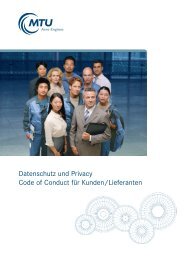

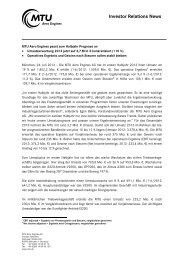
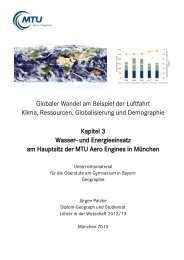
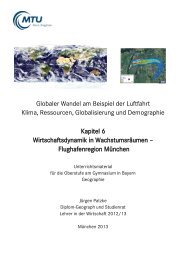
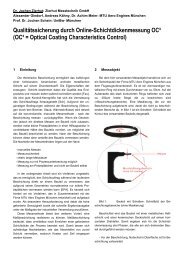
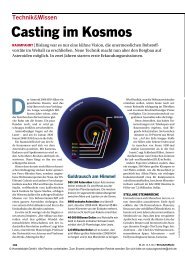

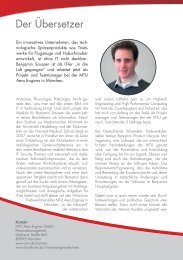
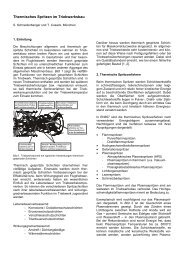
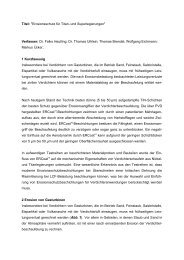


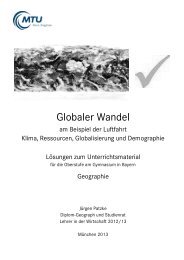
![Download PDF [5,37 MB] - MTU Aero Engines](https://img.yumpu.com/21945461/1/190x125/download-pdf-537-mb-mtu-aero-engines.jpg?quality=85)